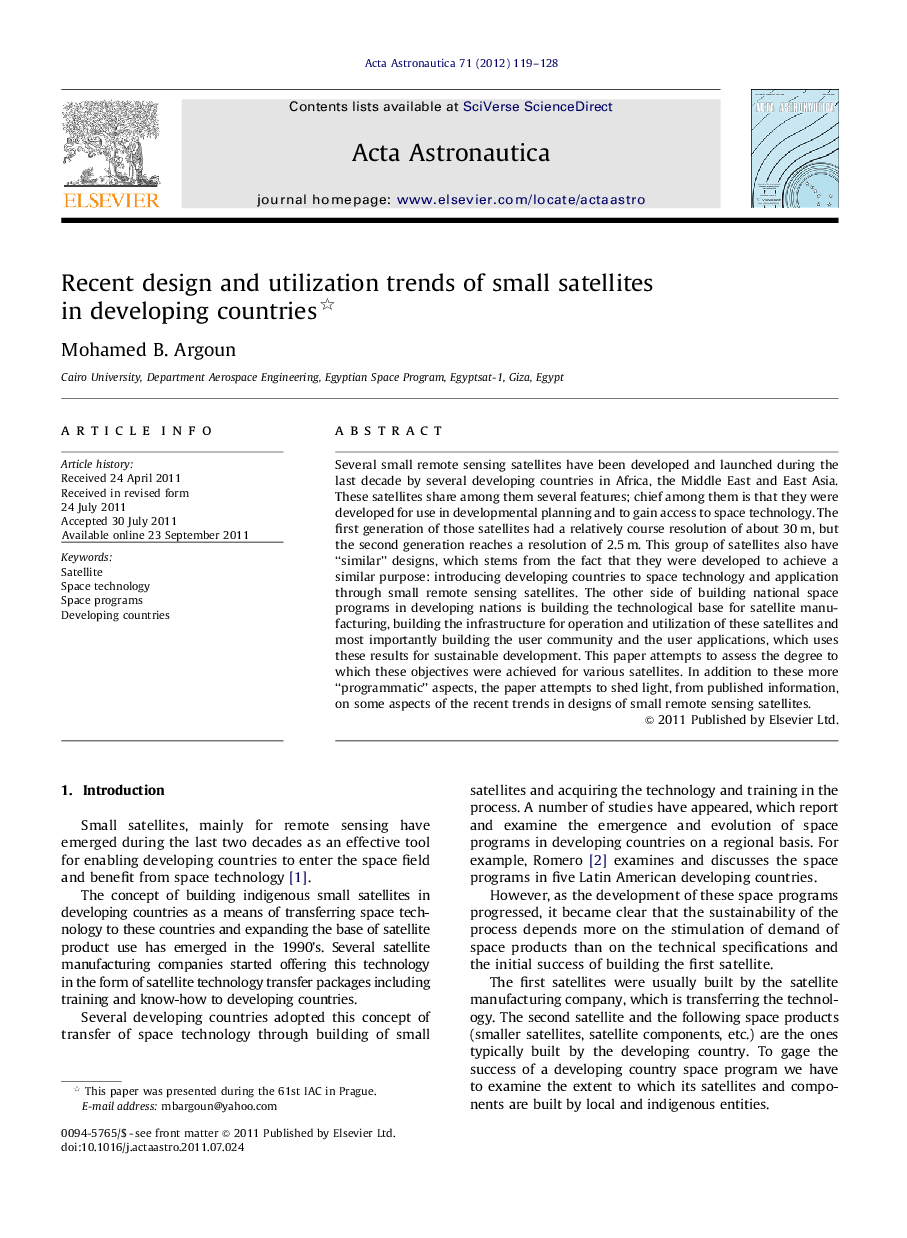| Article ID | Journal | Published Year | Pages | File Type |
|---|---|---|---|---|
| 1715488 | Acta Astronautica | 2012 | 10 Pages |
Several small remote sensing satellites have been developed and launched during the last decade by several developing countries in Africa, the Middle East and East Asia. These satellites share among them several features; chief among them is that they were developed for use in developmental planning and to gain access to space technology. The first generation of those satellites had a relatively course resolution of about 30 m, but the second generation reaches a resolution of 2.5 m. This group of satellites also have “similar” designs, which stems from the fact that they were developed to achieve a similar purpose: introducing developing countries to space technology and application through small remote sensing satellites. The other side of building national space programs in developing nations is building the technological base for satellite manufacturing, building the infrastructure for operation and utilization of these satellites and most importantly building the user community and the user applications, which uses these results for sustainable development. This paper attempts to assess the degree to which these objectives were achieved for various satellites. In addition to these more “programmatic” aspects, the paper attempts to shed light, from published information, on some aspects of the recent trends in designs of small remote sensing satellites.
► We review space activities in developing countries in Africa and Middle East. ► Capacity building of space technology for development in the region is examined. ► The first generation satellites are reviewed and technology transfer is discussed. ► The progress toward building and using indigenous satellites is also examined. ► Joint satellite “AFRICASAT” is proposed for cooperation among African space nations.
